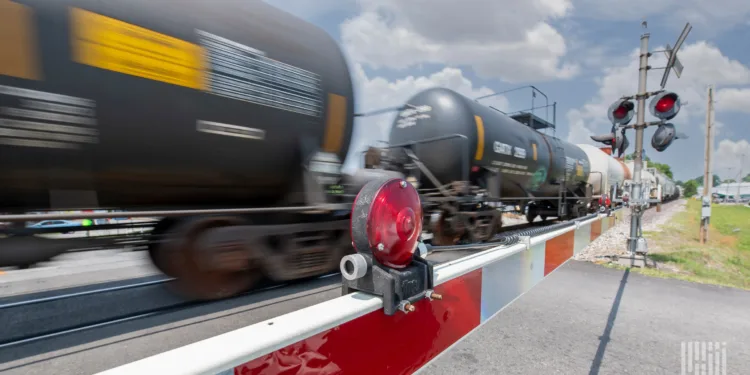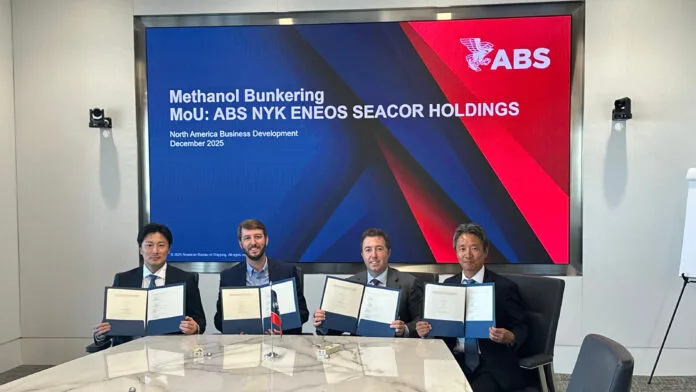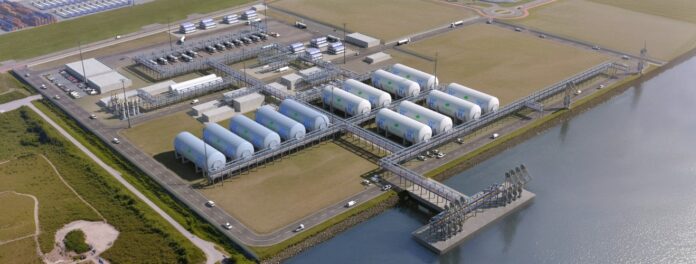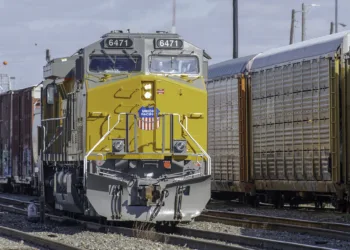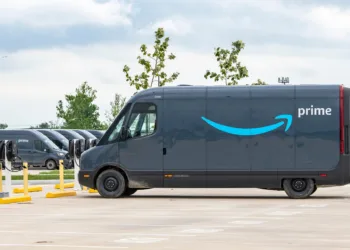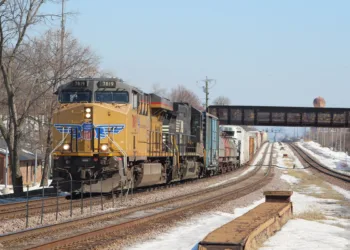The American chemicals industry, the third largest customer of the Class I railroads, has come out hard against the proposed merger between Union Pacific and Norfolk Southern.
Chemicals industry lobbyists told FreightWaves in an interview that the burden of proof is on Union Pacific and Norfolk Southern to show how the merger would not only not degrade, but positively enhance competitiveness. Chemicals shippers are concerned that increases in transportation costs due to monopolistic consolidation in the railroad industry will harm their ability to compete in a global marketplace, potentially suppressing American chemicals exports.
The industry, represented by leaders from the American Chemistry Council (ACC), has articulated their concerns in a direct appeal to the Trump Administration, emphasizing the detrimental impact such a merger would have on U.S. manufacturing competitiveness and the broader economy.
The ACC’s letter to President Trump highlights the critical role that the chemical industry plays in the U.S. economy, underscoring its contribution of over $633 billion annually and support of more than 550,000 jobs. The industry is a key pillar of manufacturing, providing essential materials across various sectors, from national defense to infrastructure development. The materials that Americans use in our daily lives, from fuel to clothing, from food to machinery, are made out of chemicals industry products.
Among the notable companies whose executives signed the letter are heavyweights such as Cabot Corporation, Huntsman Corporation, and The Lubrizol Corporation, alongside CEOs from over thirty other leading firms in the chemical industry. The coalition argues that past rail mergers have historically led to negative outcomes, including increased service disruptions, higher rates, and weakened supply chains.
The letter raises concerns about the current state of the U.S. freight rail system, which is dominated by seven Class I freight railroads controlling a vast majority of rail traffic. The chemical industry executives warn that consolidating UP and NS could exacerbate existing issues, further reducing competition and choices for rail customers.
Looking at a network map of Union Pacific and Norfolk Southern, there’s a region of significant overlap in the Midwest, a triangular nexus between Kansas City, Chicago, and St. Louis. Chemical shippers in that region with a choice between the two railroads would lose their choice and be ‘captive’ to a single railroad, which could then wield monopolistic pricing power while allowing service to degrade.
But as officials from the ACC explained, it’s not just the shippers in that specific region of network overlap that would lose their competitive choices in the market—any transcontinental shipper moving freight on the Union Pacific would have additional transportation options once their shipments reach the Mississippi River. Presumably, they could choose either the Norfolk Southern or CSX. Merging the Union Pacific and Norfolk Southern would remove that choice, the ACC argued, giving the combined entity a monopoly over a much greater geographic area.
Chris Jahn, President and CEO of the American Chemistry Council, echoed these concerns, stating, “We need more rail competition, not less. Every single merger in the past has been anywhere from a mini disaster to a major disaster.” Jeff Sloan, Senior Director of Regulatory Affairs at the ACC, highlighted the importance of keeping competitive options open, noting how past mergers like CPKC led to a meltdown in service and increased costs for businesses reliant on timely rail deliveries.
Previous mergers, such as the one between Canadian Pacific and Kansas City Southern, have demonstrated tangible setbacks. Despite regulatory safeguards, integration troubles led to significant delays and additional costs for chemical companies, which had to resort to expensive emergency trucking to fulfill customer orders.
The proposed UP-NS merger threatens to centralize control further in the rail industry. With Union Pacific already issuing embargoes at ten times the rate of its peers post-COVID-19, the merger could likely lead to fewer competitive routes and higher costs for shippers. Jahn warned that losing routing options, particularly for firms located near current UP lines, could severely impact the competitive landscape and escalate national freight costs.
Concerns from the ACC are not without precedent. Past mergers in the 1990s, particularly involving Union Pacific and Southern Pacific, resulted in severe service meltdowns which reverberated through industries reliant on freight rail. In response, the Surface Transportation Board (STB) implemented stricter guidelines requiring mergers to enhance competition, not merely preserve it.
Jahn said that chemical shippers like the interline intermodal service agreement that BNSF and CSX is working on, and argued that it was a better model for seamless coast-to-coast transportation from the customers’ perspective.
In their letter, the chemical executives urged President Trump and the STB to maintain a high bar for merger approval, insisting that any deal should unequivocally demonstrate enhancements in service, safety, and competition before being greenlighted.
“The burden of proof is on UP and NS to prove that this merger will enhance competition, improve service, and be in the public interest,” stated Scott Jensen, Director of Issue Communications at the ACC.
While formal paperwork for the UP – NS merger has not yet been presented to the Surface Transportation Board, the chemicals industry is already working on a set of demands that the merger must meet. One of them is an ambitious expansion of ‘reciprocal switching’. Under current rules, if a shipper terminal is captive to a single railroad provider, but another railroad provider has road a short distance away, the shipper’s only railroad provider is required to transfer the freight to the competing railroad shipper’s network on request.
The ACC would like to see this concept extended across the network—not just near terminals, but at any point in a shipment’s lifecycle. The concept is relatively simple: the combined entity of Union Pacific and Norfolk Southern must transfer their customers’ freight to nearby competing rail networks upon request. That’s one example of the kind of concession the chemicals industry expects the STB to impose on any deal, but they expect to play a significant role in the conversation around the merger once official DOT regulatory processes move into action.
As the proposed merger moves forward, all eyes will be on the STB to uphold stringent reviews, ensuring that Class I railroads empower rather than strangle American industrial capacity.
The post The chemicals industry hates the UP – NS merger appeared first on FreightWaves.



